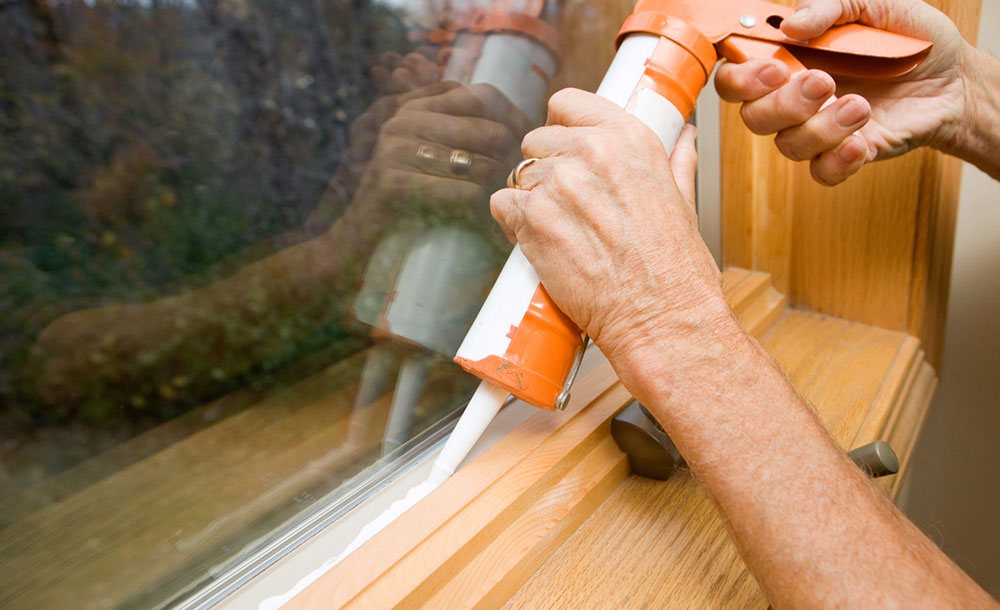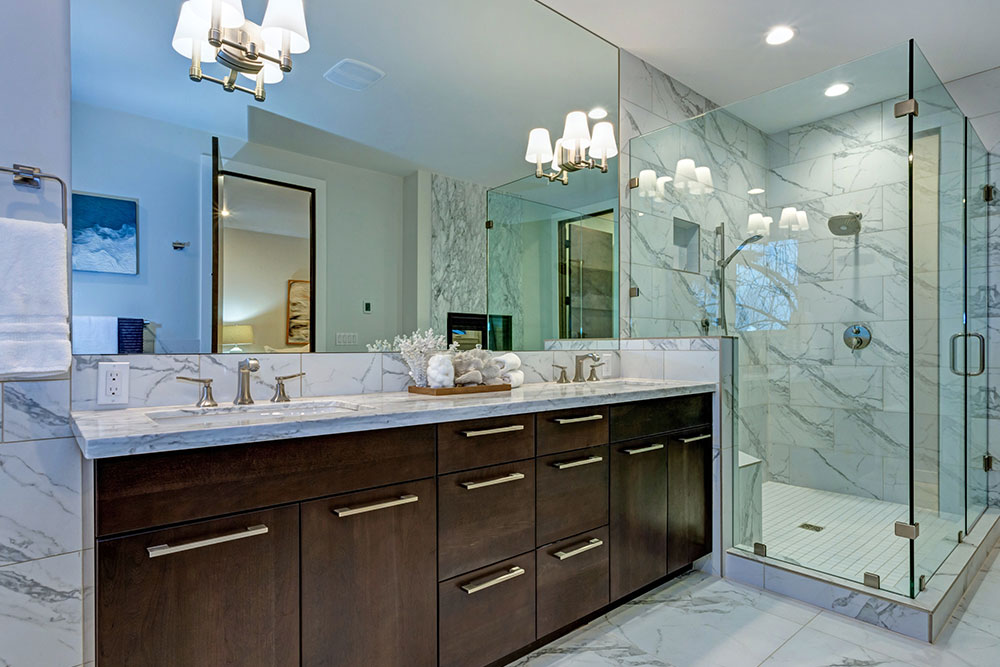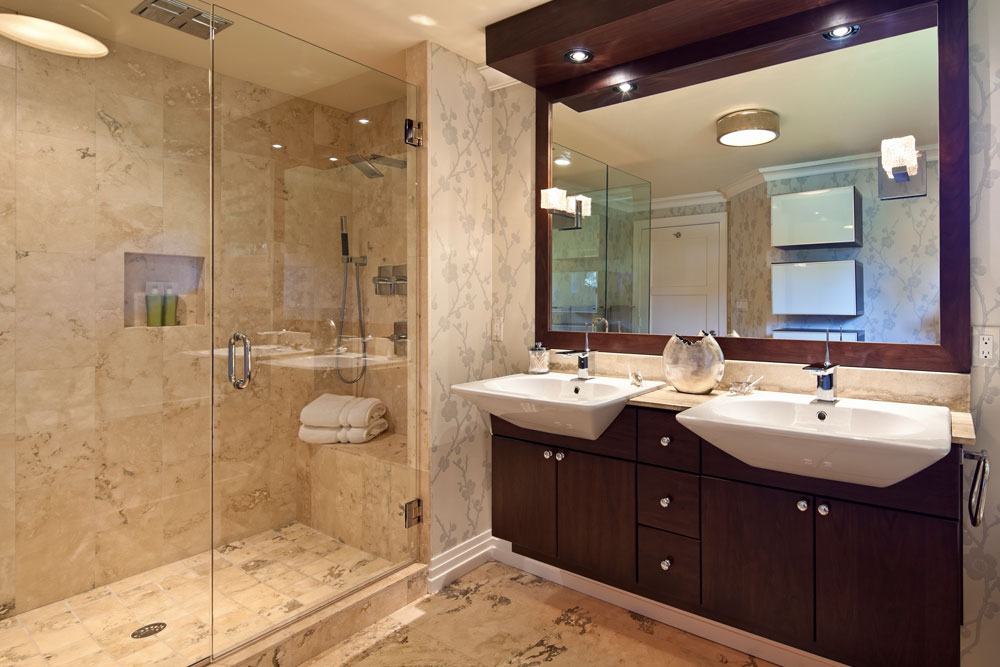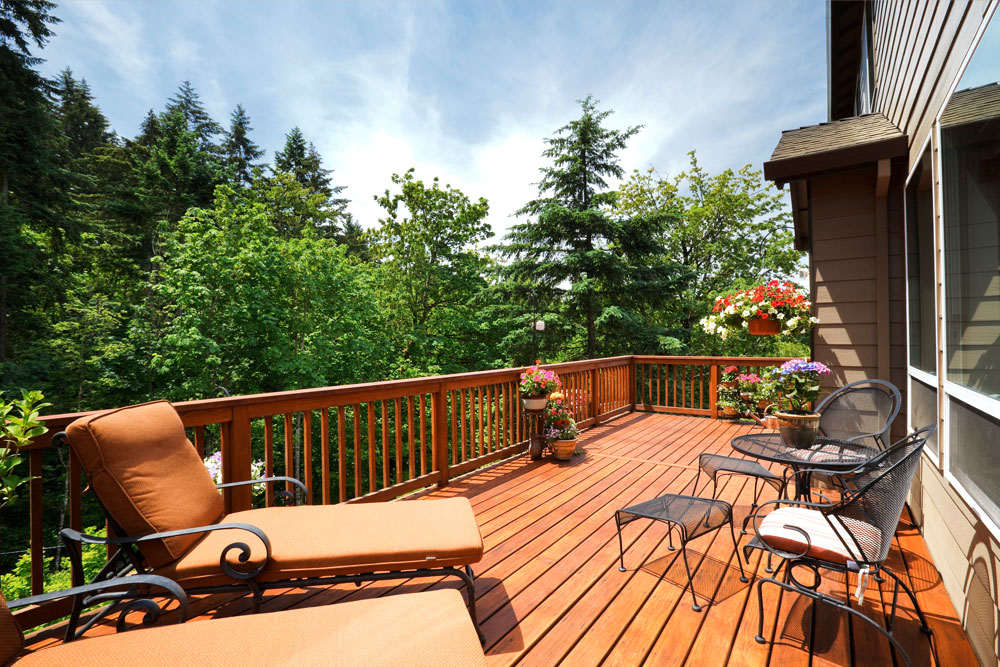Stop fireplace heat loss
Wood-burning fireplaces can warm up a room, but more often, they rob a house of heat by letting it escape up the chimney. If you have a modern fireplace with a cold air intake from outside, make sure you equip it with an airtight door. If you have an older fireplace that uses room air for combustion, equip it with a door that has operable vents. And only keep those vents open when you have a fire in the fireplace. Otherwise, heat will constantly be sucked out of the house.
Airtight doors have gaskets that seal the doors to stop air leaks. Prices are more expensive than regular doors, but they’ll pay for themselves in energy savings. Enter “fireplace doors” in a search engine to find local retailers. Also consider a chimney-top damper, which stops heat loss.
Install quilted curtains to block drafts
If you’re turning up the heat in the house to compensate for drafty windows, consider quilted curtains, which can increase your comfort and let you keep the temp down. The curtains are available in various colors, patterns and sizes. Enter ‘quilted curtain’ in a search engine to find retailers. A curtain can be installed in less than 10 minutes on your existing curtain rod.
Turn down the heat and still be comfortable
We all know the mantra by now— turn down the thermostat during the winter months and you’ll save money. And it’s true. According to the Department of Energy, for every degree you lower the thermostat, you’ll save 1 percent on your energy bill. But turning down the heat has a big drawback—you have to wear extra clothes to stay warm. The solution? Use a space heater to stay comfortable in the room where family members gather, like the living room. Fireplaces and fireplace inserts can provide space heating, but electric heaters are the easiest way to warm up a room.
Baseboard, fan-forced air and oil-filled electric heaters all have roughly the same energy efficiency, although oil-filled units are the quietest (but are also larger and heavier). You’ll have to turn down the heat enough (usually 5 degrees F or more) to offset the cost of the electricity used by the space heater and still pocket a savings. Space heaters range from basic budget models to expensive, depending on benefits like remote control, a programmable thermostat and safety features. You can buy them at home centers, discount stores and online.
A towel warmer can act like a small space heater for your bathroom and provide you with a toasty towel after bathing. There are freestanding units and units that mount to the wall and are plugged in or hardwired. Towel warmers are available at online retailers. Towel warmers don’t save energy, but they can keep you warm in the bathroom when the house thermostat is turned down.
Make your windows work for you
Keep open the blinds or drapes on windows with direct sun exposure (usually on the south side of the house) to let the sunlight heat the room. Heating doesn’t get any cheaper than this! At night, close the blinds or drapes to cover the cold glass.
Dispelling Energy Saving Myths
Some energy-saving myths have been repeated so many times that people believe they’re true. We’re here to set the record straight.
- Myth 1: Replacing windows is a good investment
New windows can increase security and comfort, but they’ll take 20 to 30 years to pay for themselves. Replacing single-pane windows with double-pane low-e windows will save energy and money, according to the Energy Star program Web site, but In a house with 20 windows, it’ll take you almost 24 years to recoup the cost of the new windows. - Myth 2: Exterior caulking is the best way to seal leaks
Done correctly, exterior caulking keeps out water. But if you want to make your house more energy efficient, work inside, not outside. Seal attic air leaks and spray expanding foam in basement leaks, such as around cables coming into the house. - Myth 3: Closing registers saves energy
Most heating duct systems have so many leaks that closing a register won’t force more warm air into other rooms—it will force more air out of the leaks.
In addition, forced-air heating systems are designed to operate with all of the registers open. The fixed-speed blower won’t perform as well with registers closed and can create a whistling in the ducts.
If in the winter you want to close off a portion of your house, like the upstairs, talk to a rep from your furnace company or a heating specialist to determine the best way to save energy with your furnace.
Cut heat loss with storm windows
Storm windows aren’t new, but they’re definitely improved: New ones open and close and can be left on year-round. Some offer low-emissivity coatings to further cut heat loss. You can use low-e versions even if your windows already have a low-e coating.According to the Department of Energy, almost half of U.S. homes have single-pane windows. Windows are major sources of heat loss, but low-e storm windows can reduce that heat loss by more than 50 percent.
You’ll see the biggest payback when they’re used over single-pane windows. But don’t use storm windows over aluminum windows—heat buildup between the two windows can damage the aluminum, and drilling holes for installation can cause leaks. You can buy or special-order storm windows at home centers, but you may have trouble finding low-e models and may need to search online. Storm windows are much less expensive than replacement windows. Measure the height and width of the window (from the outside) before ordering. Do-it-yourself installation takes about 30 minutes per window.
Seal basement air leaks
Sill plates and rim joists are usually poorly insulated (if at all) and very leaky. So if you have an unfinished basement, grab some silicone or acrylic latex caulk to seal the sill plate. If you simply have fiberglass insulation stuffed against the rim joist, pull it out. Run a bead of caulk between the edge of the sill plate and the top of the foundation wall. Use expanding spray foam anywhere there are gaps larger than 1/4 in. between the sill and the foundation. For hollow-block foundations, stuff fiberglass insulation in the holes, then seal it with expanding foam.
Caulk along the top and bottom of the rim joists and use expanding foam to seal around holes for electric, water and gas lines. Then cut rigid foam insulation to size and place it against the rim joist. Caulk around all four sides of the foam insulation.
Use an infrared thermometer to find drafts
If your home is drafty, check it with a thermal leak detector or infrared thermometer. The battery-operated hand-held tool uses infrared sensors to identify spots that are warmer or colder than the surrounding area, signifying an air leak or poor insulation. Of course, you have to do some detective work to figure out the problem and how to fix it. The detectors are available at some home centers and online.
Add attic insulation
In most homes, but especially in older homes, adding insulation in the attic will cut heat loss. At a minimum, homes should have attic insulation between R-22 and R-49 (6 to 13 in. of loose fill or 7 to 19 in. of fiberglass batts). Check with the local building department or look online to find the recommended level for your area.
Stick your head through the attic access door and measure how much insulation you have. If your insulation is at or below the minimum, adding some will lower your heating bills. If you need to add more, go with loose-fill insulation rather than fiberglass batts even if you already have fiberglass. Loose fill is usually composed of cellulose or fiberglass and lets you cover joists and get into crevices. You can rent a blower and do the job yourself for less than half that cost of a pro, but it’s a messy job.



